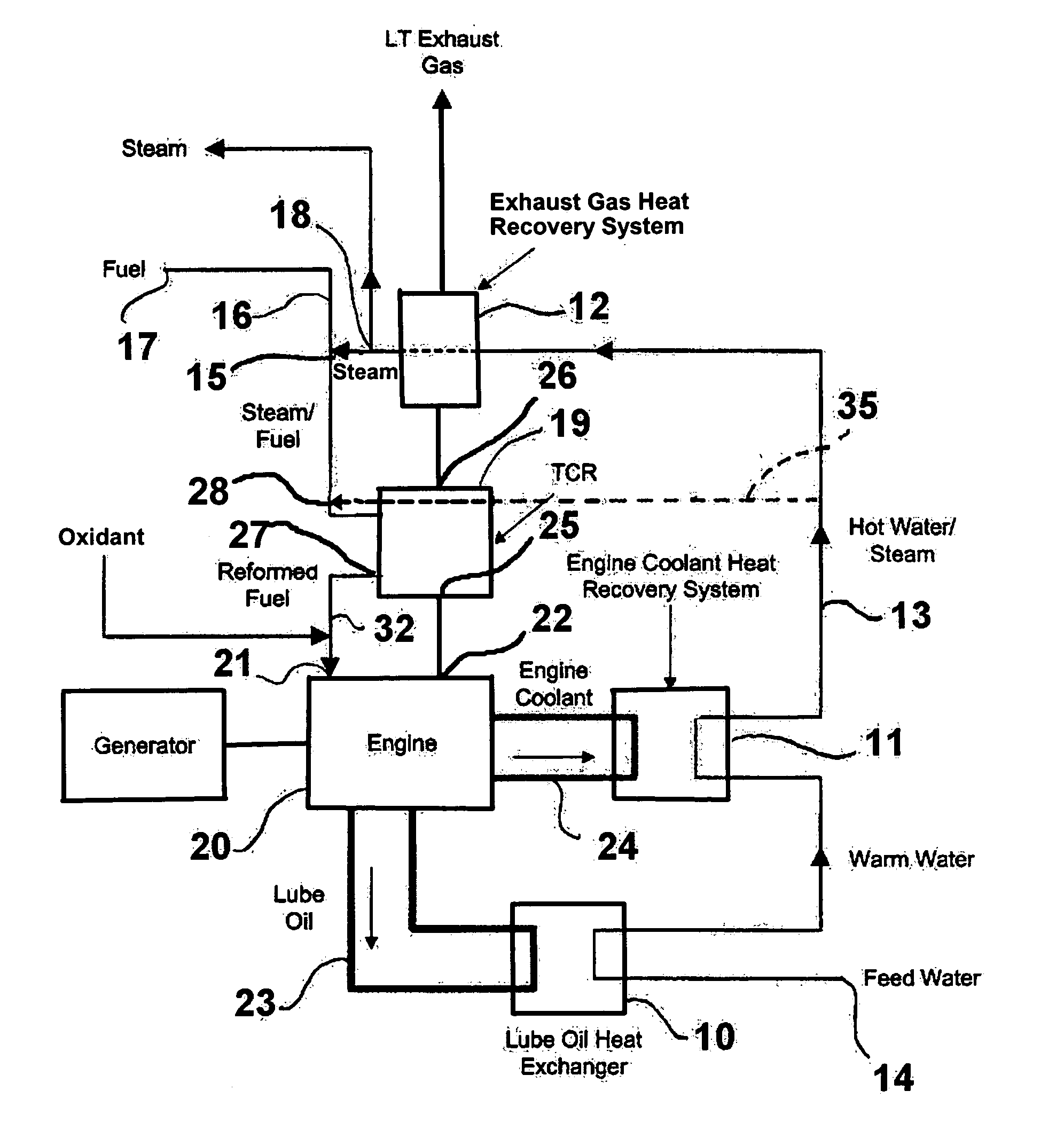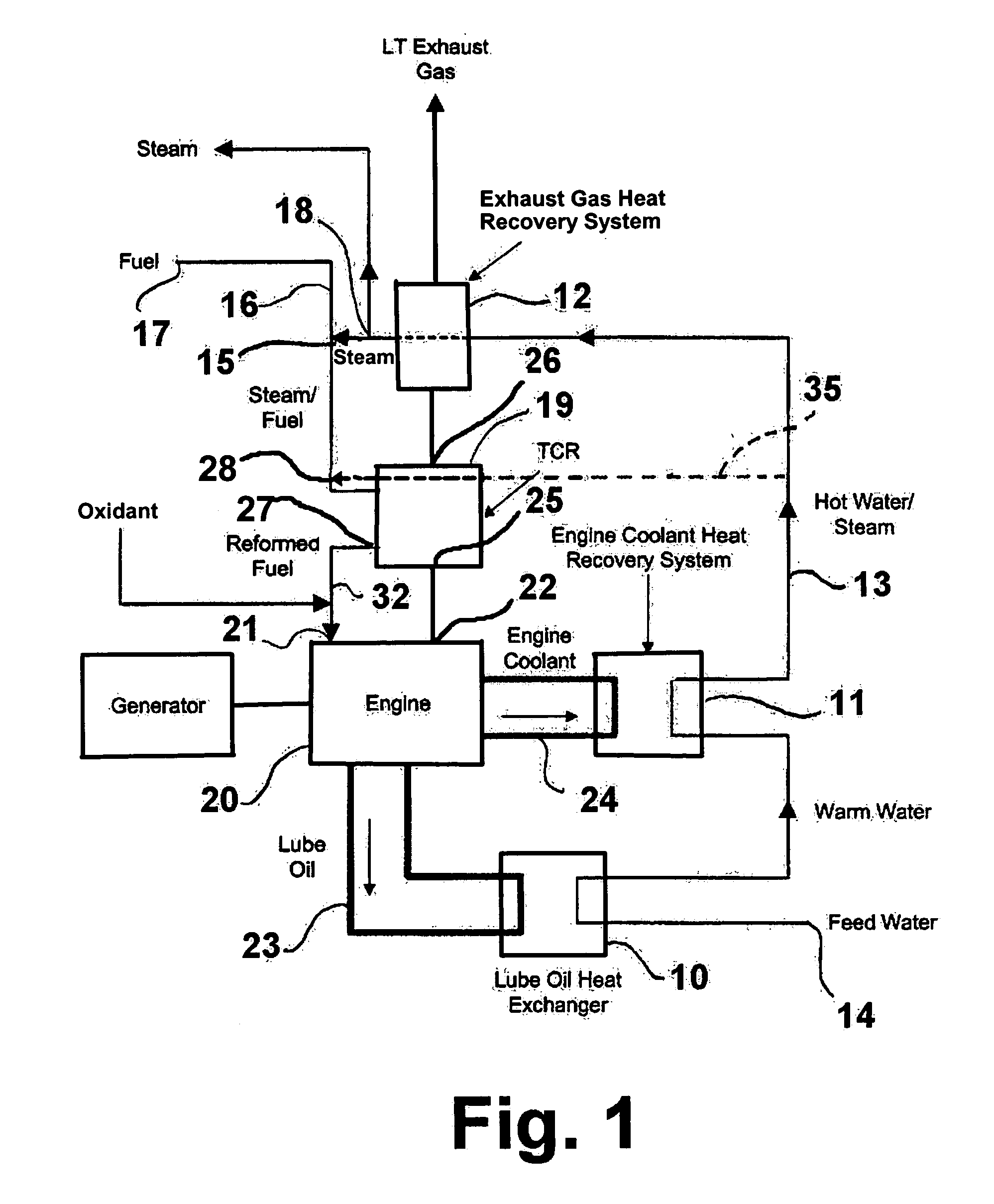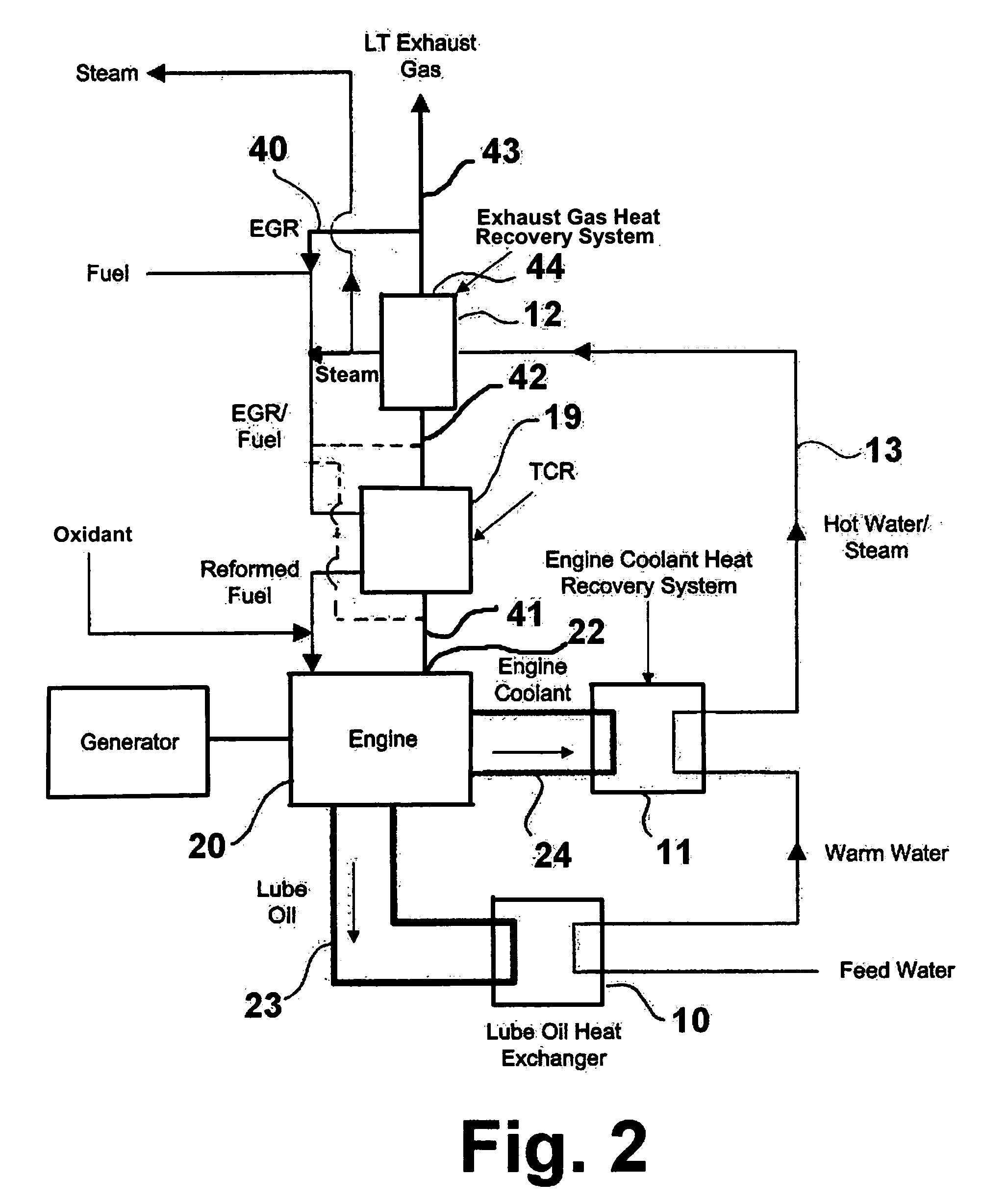Advanced high efficiency, ultra-low emission, thermochemically recuperated reciprocating internal combustion engine
a reciprocating, high-efficiency technology, applied in the direction of machines/engines, combustion-air/fuel-air treatment, sustainable manufacturing/processing, etc., can solve the problems of significant energy waste, the need for ready availability of hydrogen, etc., to reduce the emission of unburned fuel, and increase the engine combustion efficiency
- Summary
- Abstract
- Description
- Claims
- Application Information
AI Technical Summary
Benefits of technology
Problems solved by technology
Method used
Image
Examples
Embodiment Construction
[0037]The advanced thermochemical recuperator (TCR) of this invention is an innovative technology that can be retrofitted to, or be newly installed in, a wide range of internal combustion (IC) engines, such as stationary reciprocating engines and gas turbines. As previously stated, the thermochemical recuperator in accordance with one embodiment of this invention uses steam and heat recovered from waste energy such as exhaust energy and closed-cycle heat losses from the engine to reform natural gas or other reformable fuels to a H2-enriched fuel suitable for use in the engines. This endothermic reaction increases the energy content of the fuel significantly, resulting in higher fuel economy. The thermochemical recuperator of this invention is suitable for reforming a variety of liquid and gaseous fuels.
[0038]Hydrogen provides numerous benefits to the combustion of a reciprocating internal combustion (IC) engine due to its faster flame speed, shorter quenching distance, etc. Thus, us...
PUM
| Property | Measurement | Unit |
|---|---|---|
| reforming temperature | aaaaa | aaaaa |
| temperatures | aaaaa | aaaaa |
| compression ratio | aaaaa | aaaaa |
Abstract
Description
Claims
Application Information
 Login to View More
Login to View More - R&D
- Intellectual Property
- Life Sciences
- Materials
- Tech Scout
- Unparalleled Data Quality
- Higher Quality Content
- 60% Fewer Hallucinations
Browse by: Latest US Patents, China's latest patents, Technical Efficacy Thesaurus, Application Domain, Technology Topic, Popular Technical Reports.
© 2025 PatSnap. All rights reserved.Legal|Privacy policy|Modern Slavery Act Transparency Statement|Sitemap|About US| Contact US: help@patsnap.com



